Our History
North London Collegiate School was founded in April 1850 by Frances Mary Buss in the family home at 46 Camden Street, Camden Town.
All the family assisted with the school including her brother Septimus and her father, R.W. Buss, who illustrated Dickens’ novels and whose paintings now hang in the Buss Room in the Old House at Canons.
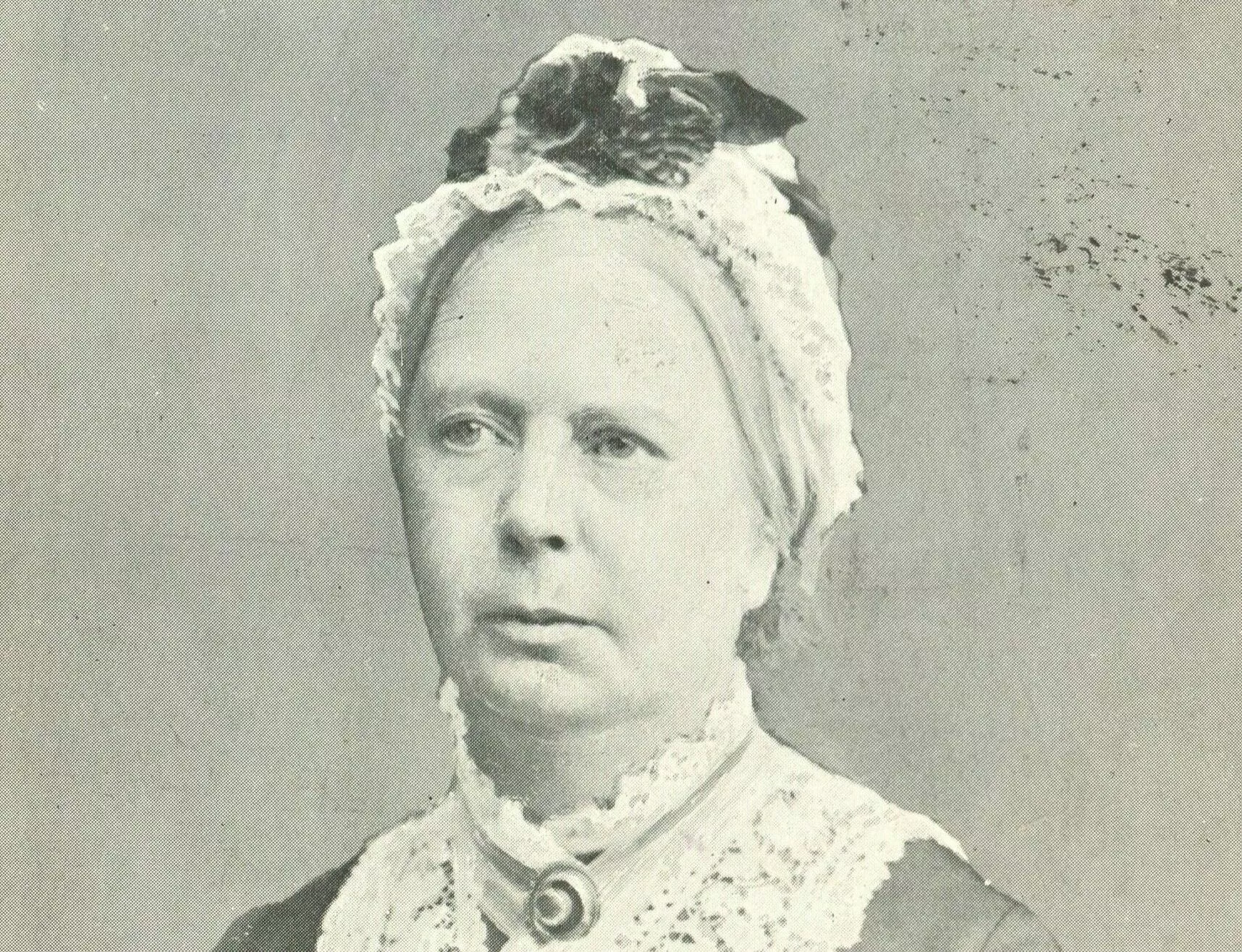
In 1871, Miss Buss also founded Camden School for Girls for families with more modest incomes. You can find out more about her and the headmistresses who followed her in the dedicated sections below.
The school, as it grew bigger, moved to Camden Road and then to Sandall Road. The site at Canons in Edgware was bought in 1929, but the school did not move there fully until May 1940.
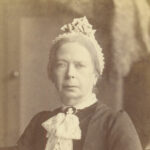 MISS FRANCES MARY BUSS (HEADMISTRESS 1850–1894)
MISS FRANCES MARY BUSS (HEADMISTRESS 1850–1894)
Miss Buss is recognised as a pioneer in girls’ education and in teacher training. Her pupils were amongst the first girls to take public examinations and go to university, and many went on to become pioneers themselves. The school itself, as was said in the Fleming Report in 1944, became the model for girls’ schools throughout the country and, indeed, the world.
As the School grew larger, it moved to new sites within Camden and then to Canons, its current home in Stanmore. The original house was adapted and extended by Sir Albert Richardson, and the school moved into the new building in 1940.
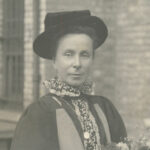 DR SOPHIE BRYANT (HEADMISTRESS 1895–1918)
DR SOPHIE BRYANT (HEADMISTRESS 1895–1918)
Miss Buss was succeeded as Headmistress by Dr Sophie Bryant, the first woman in England to be awarded a Doctorate of Science. Appointed by Miss Buss to teach German and mathematics, Dr Bryant became eminent also in psychology, wrote books on educational theory and Irish history, and revolutionised the school’s science curriculum. Like Miss Buss, she was instrumental in the campaign for female higher education. She was involved in setting up Henrietta Barnett School, and as a leading figure in the campaign for suffrage, she took part in suffragist marches rather than suffragette causes. She supported Irish Home Rule and was a keen mountaineer and cyclist.
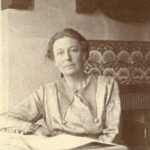 MISS ISABELLA DRUMMOND (HEADMISTRESS 1918–1940)
MISS ISABELLA DRUMMOND (HEADMISTRESS 1918–1940)
Initially appointed by Dr Sophie Bryant as a Science Mistress at NLCS, Miss Drummond subsequently became Headmistress of Camden School and, in 1918, succeeded Mrs Bryant as Headmistress of NLCS.
Amongst her many achievements was her role in devising, with teacher Rose Stern, a revolutionary science curriculum for the school. She also “discovered” NLCS’ current home of Canons whilst on a country walk in Edgware and oversaw the school’s move there, which was accelerated by the outbreak of World War 2.
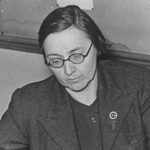 MISS EILEEN HAROLD (HEADMISTRESS 1941–1944)
MISS EILEEN HAROLD (HEADMISTRESS 1941–1944)
Miss Harold’s sound learning and courtesy, as well as her gentle firmness and sense of humour, guided the school as it settled into Canons during the difficult days of World War 2.
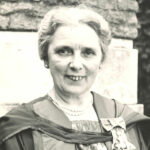 DAME KITTY ANDERSON (HEADMISTRESS 1945–1965)
DAME KITTY ANDERSON (HEADMISTRESS 1945–1965)
Dame Kitty Anderson’s headship was characterised by her brilliant mind, the warmth of her relationships with pupils and her tireless service to the School and to the wider world of education. NLCS became a Direct Grant grammar school in 1945 and shortly afterwards was one of the first schools in the post-war era to establish an exchange with a German school. The centenary was celebrated in 1950, and the Drawing School and an outdoor swimming pool were among the new buildings opened under Dr Anderson’s guidance.
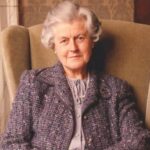 MISS MADELINE MCLAUCHLAN (HEADMISTRESS 1965–1985)
MISS MADELINE MCLAUCHLAN (HEADMISTRESS 1965–1985)
In 1965 Miss McLauchlan was appointed Headmistress after serving as Headmistress of Henrietta Barnett School. As well as guiding the school in 1976 to become an independent school with charitable status, she fostered personal relationships and encouraged the development of music and drama. With a love of architecture, art and music and an eye for style and detail, she was responsible for overseeing the construction of both the Music School and the McLauchlan Theatre, which later became the McLauchlan Library.
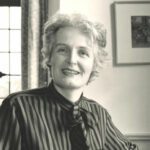 MRS JOAN CLANCHY (HEADMISTRESS 1986–1997)
MRS JOAN CLANCHY (HEADMISTRESS 1986–1997)
Mrs Clanchy preserved the traditions and values of NLCS in a period of social change and moved the School forward towards the future. Her vision, energy and determination enhanced the standing of the School and encouraged the growth of scholarship, the arts and care for the individual. GCSE examinations were introduced at this time, and both the Junior School and the First School were opened to enhance and enlarge the school community.
 MRS BERNICE MCCABE (HEADMISTRESS 1997–2017)
MRS BERNICE MCCABE (HEADMISTRESS 1997–2017)
Mrs McCabe believed that subject rigour, depth of subject knowledge, and the ability to communicate a love of subject to students are the fundamental requirements for effective teaching.
She had a passion for art and literature and was responsible for building the Performing Arts Centre in 2007, which now hosts over 50 productions and concerts each year, and enables every girl to participate in performances.
Mrs McCabe was Co-Director of the Princes Teaching Institute, and together with her NLCS teaching staff, has shared a commitment to subject-based learning with over 1000 maintained schools and 3300 teachers. She served on a number of governing bodies and national education committees in the maintained and independent sectors, including the National Grammar Schools Association and the GSA/HMC Universities Committee. In 2010 she became a member of the Government’s National Curriculum Review Advisory Committee and was named in the Evening Standard’s Top 1000 Most Influential People in London.
Mrs McCabe encouraged students to be outward-looking and internationally minded and set up overseas NLCS branches in Jeju and Dubai.
In the Summer of 2017, Mrs McCabe stepped down after 20 years as Headmistress and took up the position of NLCS Director of International Schools and Education Strategy.
In June 2018, Mrs McCabe was made an OBE (Officer of the Order of the British Empire) by the Prince of Wales at Buckingham Palace for her services to education. Whilst serving as Headmistress, the School consistently maintained its position as one of England’s most academically successful schools.
In early 2018, Mrs McCabe was diagnosed with glioblastoma, a form of brain cancer. She faced the last twelve months of her life with remarkable courage and dignity. She died peacefully at home on 18 February 2019.
Bernice was an inspiring educationalist whose interests and energies were manifold. Her passion for the provision of a scholarly, and academically challenging education, led her to introduce the International Baccalaureate Diploma alongside A levels and the Pre-U at North London Collegiate School. Her desire to enable future generations of teachers to burnish and develop the love of their subjects was felt both here at NLCS, in our sister schools in Jeju and Dubai, and in her work with The Prince’s Teaching Institute.
Bernice’s legacy will continue at the School. She was committed to providing educational opportunities for children who otherwise would not have been able to afford them here at School, and The Bernice McCabe Bursary Fund was set up in her name to honour this.
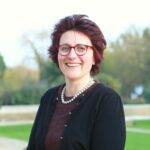 MRS SARAH CLARK (HEADMISTRESS 2018-2022)
MRS SARAH CLARK (HEADMISTRESS 2018-2022)
Sarah joined NLCS in January 2018 and was previously Headmistress of The Queen’s School in Chester, where she enjoyed seven successful years. Sarah studied History and Classics at Newnham College, Cambridge. Sarah was passionate about the transformative power of harnessing children’s interests and enthusiasms alongside rigorous and inspirational teaching. Sarah led the School during the unprecedented challenges of the COVID-19 pandemic, including a national lockdown, which forced the School to close and move to online teaching, managing student bubbles, social distancing, regular Covid-19 testing and the cancellation of public exams. Sarah Clark and her team worked tirelessly throughout 2020 and 2021 to develop an outstanding hybrid teaching model, ensuring every child continued to receive an ambitious academic education. In addition to mitigating the physical impacts presented by the pandemic, the emotional health and well-being of our community became paramount, and the pastoral team created an outstanding programme of activities and events, both online and in-person, ensuring that the pastoral care of our students is as important as their academic outcomes.
North London Collegiate School’s Archive consists of records relating to the history of North London Collegiate School from 1850 onwards, including many items concerning Frances Mary Buss and the development of the school, the subsequent Headmistresses, staff and pupils, as well as women’s education and teacher training.
Frances Mary Buss was central to the establishment of the Association of Head Mistresses, and she and her successors were important influences in the foundation of numerous schools throughout the world and in the wider world of education, including teacher training.
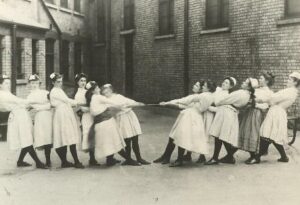 Tug of War c.1890.
Tug of War c.1890.
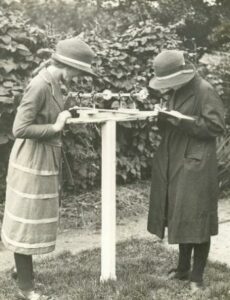 Weather readings 1920s
Weather readings 1920s
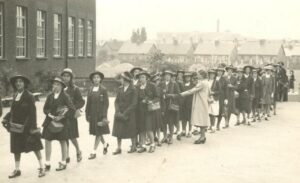
Pupils’ Evacuation, World War 2
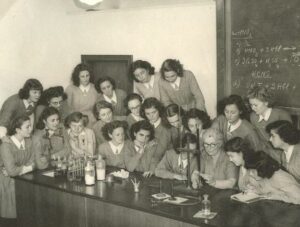 Science lesson, World War 2
Science lesson, World War 2
The Archive also contains a collection on the history of Canons including material on James Brydges, 1st Duke of Chandos and the subsequent owners of Canons. An important item in the collection is the Letter Book of Cassandra Brydges, second wife of the Duke.
Used and appreciated by academics, genealogists and other researchers, pupils also benefit from unrivalled access to the unique archival material, which is used to inspire and complement curricular and extra-curricular activities. Students of all ages handle primary documents, bringing to life historical events such as the suffragettes and suffragists and life during the two World Wars, and encouraging them to appreciate the school’s traditions. Founder’s Day is celebrated each year, and is yet another occasion for the whole school community to use and appreciate the collections.
Download the complete Archive Booklet
Some digitised documents can be accessed here and admissions forms of all NLCS pupils from 1850–1914 are available on the commercial site Find My Past. For access to a wider range of material, available for research purposes, please contact archive@nlcs.org.uk
Canons or Cannons takes its name from the Augustinian cannons to whom it belonged in the Middle Ages. The estate was later owned by Sir Thomas Lake, James I’s Chancellor of the Exchequer, and in 1697 his great-granddaughter Mary brought it as a dowry when she married her cousin James Brydges.
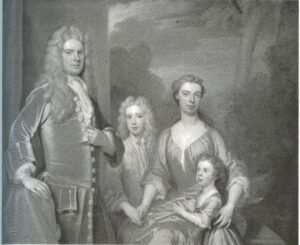
James became MP for Hereford and Paymaster General, and after Mary’s death married his cousin, Cassandra Willoughby, in 1713. He built Cannons as a palatial home, famous throughout England, employing prestigious architects, craftsmen and artists.
In 1714 Brydges inherited the earldom Caernarvon, and in 1717 became 1st Duke of Chandos. George Frederick Handel was his composer-in-residence, and played the organ at St Lawrence, Little Stanmore which has been restored to its 18th century splendour and contains the Brydges mausoleum. Handel wrote The Chandos Anthems at Canons, and his opera Acis and Galatea was first performed in the gardens. The composer Johann Christoph Pepusch led the Duke’s orchestra.
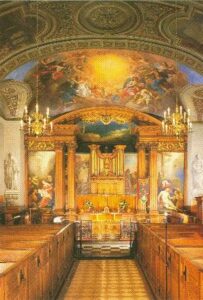
Chandos lost his fortune in the South Sea Bubble of 1720, and after Cassandra’s death married Lydia Davall, a wealthy widow. He died in 1744, and Canons was demolished in 1747, when its effects were auctioned for architectural salvage. The estate was bought by William Hallett, a cabinet-maker, who in 1760 built a modest country house on the site.
Canons was subsequently owned by: ‘Captain’ Dennis O’Kelly, who made his fortune from the great race-horse, Eclipse; Sir Thomas Plumer, Master of the Rolls; Dr David Begg; and Sir Arthur du Cros, founder of the Dunlop Rubber Co, who employed Charles Mallows to design the gardens. It was purchased by the school in 1929 for £17,500.
Our Future
Site Masterplan
LATEST NEWS
Planning permission has been granted by Harrow Council to proceed with the first Phase of the Site Masterplan development. This includes the Innovation, Design, Engineering, Art & Science Hub (IDEAS Hub) and a new Reception/Administration building, extension to the Tractor Barn and two additional Tennis Courts.
For more information about these exciting projects please see the public consultation slides below.
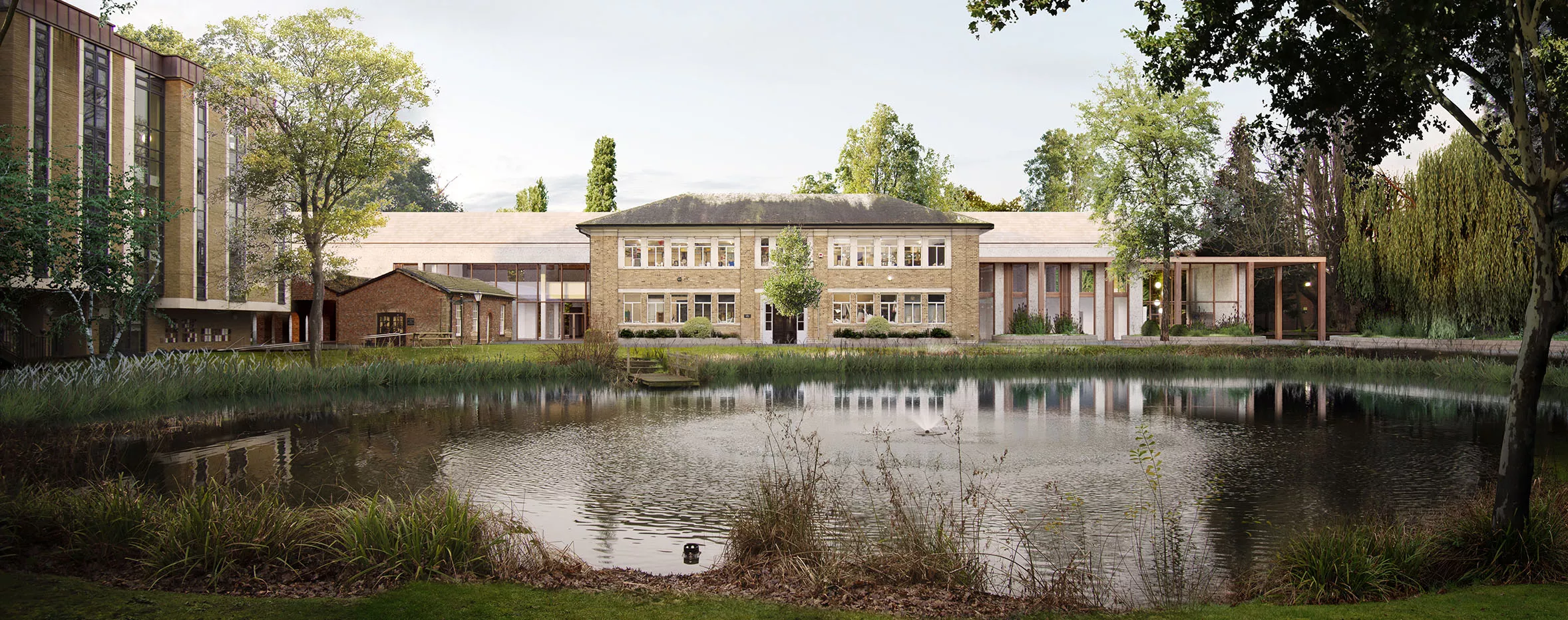
The Site encompasses the North London Collegiate School (NLCS) buildings and the School grounds.
NLCS is located in the London Borough of Harrow and is a short walk from Stanmore and Canons Park tube stations. The School’s address is Canons Drive, Edgware, Middlesex, HA8 7RJ.
Read more about the Site here.
The School submitted a hybrid planning application to Harrow Council which was approved on 18th November 2020 subject to the usual conditions associated with large projects. This was for a 20-year masterplan with works to take place in three phases.
A hybrid application is one that combines ‘detailed’ and ‘outline’ proposals. The hybrid application that will be submitted consists of the following:
- Phase 1 – Detailed planning application (for the IDEAS Hub and a new reception/administration building, extension to the Tractor Barn and two additional tennis courts)
- Phase 2 & 3 – Outline planning application (for improvements to the Canons Sports Centre; expansion of the Performing Arts Centre and the Music School; additional classrooms and rebuilding the Junior School)
Read more about these Phases 1, 2 & 3 here.
The design of the new buildings has been carefully considered in order to complement the heritage of the School and surrounding grounds, whilst also seeking to create modern, inspiring and environmentally sustainable buildings that will serve the School for years to come.
Read more about the design approach here.
The proposals will build on the history of the School and its grounds, ensuring NLCS’s success for the next 100 years of its history.
The unique heritage of the School, which contains two grade-II listed heritage buildings, has been reflected in the design, materials and location of the proposed works. The site also forms part of the designated Canons Park Estate Conservation Area, therefore the landscaping strategy has responded to this context by the use of complementary planting.
Read more about how the proposals have responded to the School’s heritage context here.
The School’s first priority is the development of an engineering, design & technology centre combined with extended art facilities. Together these will form an IDEAS Hub (Innovation, Design, Engineering, Art and Science Hub), which will underpin a shift in educational focus, in order to deliver greater integration and coherence in the STEAM fields of Science, Technology, Engineering, Art and Mathematics.
The IDEAS Hub will play an important role in encouraging more students to consider taking these subjects at the School and beyond.
It will also enable NLCS to welcome even more local school children and people into the School to gain the benefits of our resources, programmes of study and to work with our girls in partnership activities.
Read more about the IDEAS Hub here.
The proposals present a unique opportunity to develop NLCS’s partnerships with local schools and provide a leading STEAM educational hub, both for local teaching staff and students.
Phase 1 of the Masterplan will also provide an opportunity to improve access to School buildings for the community, whilst maintaining the safety of students, so that community groups and clubs will be able to benefit from these improved spaces.
Read more about the community benefits here.
The masterplan provides a unique opportunity to enhance the School’s green spaces and introduce new planting that encourages wildlife, as well as creating attractive spaces for students to enjoy. The landscape strategy is an essential part of the proposals; the types of proposed planting, their location and how they will enhance the environment of the School have been carefully considered.
The aims of the landscape strategy are to:
- Enhance the existing and new green areas to support biodiversity;
- Increase the quality of trees – 38 trees have been identified as being in poor health or low value and will be replaced with 63 new trees;
- Promote wellbeing by improving the School’s green spaces and planting, to be enjoyed by teachers and students.
Read more about the landscaping strategy here.
A welcoming entrance
The proposals include a new entrance building and changes to the loop road located at the north entrance of the School. This will provide a more welcoming sense of arrival and improved security for students.
Most students already utilise the schools mini-bus service to arrive / depart from the school. Improvements to the existing road infrastructure within the School’s boundaries will improve safety by providing a larger waiting area for students and encourage more sustainable forms of transport with the addition of bike storage.
It is important to note that the proposals will not result in an increase in student numbers or an increase in the level of traffic expected at the School. By improving the capacity for students to arrive via sustainable methods, it is anticipated that there will be a net reduction in the number of students travelling to school by car.
Read more about the changes to the School’s main entrance area here.
The proposed masterplan will help to secure the long-term sustainability of NLCS, ensuring it continues to adapt its facilities so that the School can best prepare students for life in the twenty-first century.
The proposals will support the School’s commitment to sustainability and promote its ambition to be Carbon Net-Zero by 2030.
This will be achieved by sustainably designed buildings and improvements to the existing school infrastructure to encourage more sustainable methods of transport to the School.
Read more about the sustainability features of the proposed buildings here.